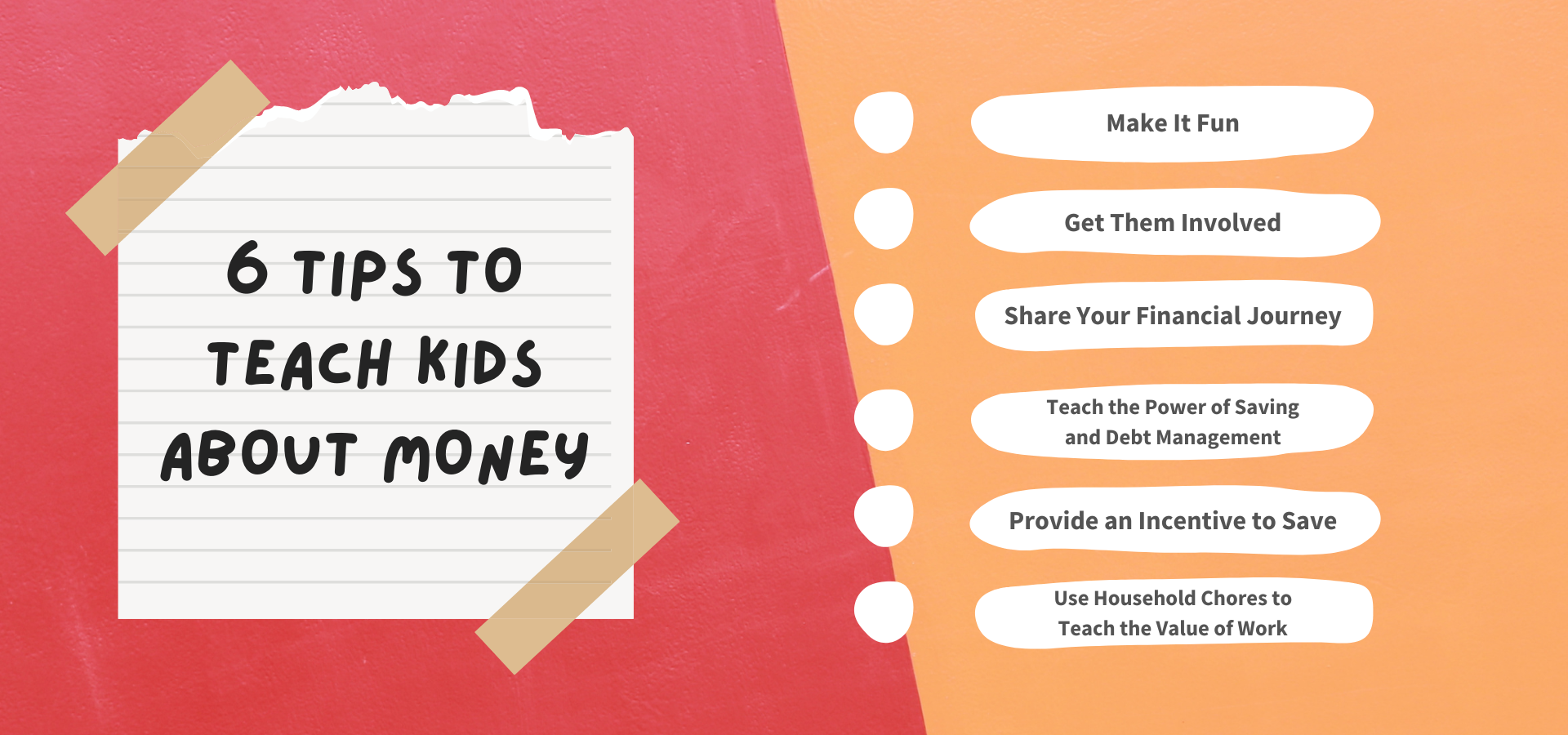Every parent wants the best for their children and strives to prepare them to lead a happy, healthy, and successful life. But, despite understanding the importance of financial responsibility, only 28 percent of parents speak to their children about money.1

It’s no secret that money can be a taboo subject for many adults, but it’s important to remember that our kids are watching and learning from us. While many parents believe talking about money can be stressful to children or that they are too young to understand financial concepts, these are meaningful conversations to have early.
It’s easy to underestimate how much kids can absorb and understand. But the truth is, kids are never too young to start learning about money. In fact, researchers at the University of Wisconsin-Madison found that fourth- and fifth-grade children could understand financial education and retained it after initial coursework. By starting the conversation early, we can help set them up for financial success in the future.2
Therefore, to help you prepare for financial conversations, we will share some of our favorite tips and tools to teach your kids about money.

6 Tips to Teach Kids About Money
1. Make It Fun
It’s no secret that money can be a taboo subject for many adults, but it’s important to remember that our kids are watching and learning from us. While many parents believe talking about money can be stressful to children or that they are too young to understand financial concepts, these are meaningful conversations to have early.
It’s easy to underestimate how much kids can absorb and understand. But the truth is, kids are never too young to start learning about money. In fact, researchers at the University of Wisconsin-Madison found that fourth- and fifth-grade children could understand financial education and retained it after initial coursework. By starting the conversation early, we can help set them up for financial success in the future.2
Therefore, to help you prepare for financial conversations, we will share some of our favorite tips and tools to teach your kids about money.
2. Get Them Involved
Involving your child in lighter financial decisions might help them see the value of the lessons you’re teaching and better understand the “why” behind them. For example, everyday tasks like grocery runs can become the perfect learning experience and an opportunity to practice what they have learned. Look for opportunities like these in your weekly routine by finding ways to help your child apply what you’re teaching them.
3. Share Your Financial Journey
We all make mistakes when it comes to money, and it’s important to remember that these mistakes can be valuable learning opportunities. Instead of avoiding the subject, use your financial journey to teach your children about the importance of financial responsibility.
Share your challenges and successes with them while encouraging open conversation about money. This will not only help your child develop a positive mindset around finances, but it will also encourage them to be open and honest about their own financial experiences.
4. Teach the Power of Saving and Debt Management
Although debt is a reality for many, it’s important to teach your children about the power of saving and how to manage debt responsibly. One way to do this is by giving them an allowance and allowing them to make a purchase beyond what they have saved but requiring them to pay it back with an extra allowance in the future. This helps them understand the concept of interest and importance of responsible debt management.
5. Provide an Incentive to Save
Saving is a key building block for pursuing financial success. But saving can be a difficult concept for children to understand.
One way to help your child learn the advantages of saving is to offer incentives. For example, if they have $10, you could give them a small percentage of whatever they save for each week they hold on to their money. If you prefer to avoid money awards, consider alternatives to reinforce the concept of saving.
6. Use Household Chores to Teach the Value of Work
Helping children understand the relationship between “work and pay” can help them better adjust as they grow older and start working.
Household chores can be a great way to do this because they allow children to take on additional responsibilities in exchange for extra allowance. This helps children understand the relationship between work and pay, helping prepare them for the working world as they grow older. By assigning age-appropriate chores and offering the opportunity for extra allowance, you can teach your child the value of hard work and financial responsibility.
Tools That Can Help
Several apps are available to help children learn about money and develop good financial habits. Some choices include the following:
PiggyBot: This app helps kids track their allowances, set goals, and learn about saving and budgeting.
Go Henry: This app is designed for kids aged 6–18 and offers features such as a debit card, spending tracking, and the ability to set savings goals.
Greenlight: This app allows parents to limit their children’s spending and track their purchases. It also includes educational content to help kids learn about money.
Before using any of these apps, research and determine which is the best fit for your child’s needs and age. The companies mentioned are for illustrative purposes only and should not be considered a solicitation to buy or sell a security.
Demonstrating the Value of Financial Education
As one of your children’s sources of financial experience, we hope that these tips and tools can help you discover new ways to guide your children toward financial literacy. Please let us know if you would like more information about tools to teach your kids about money. We can help point you in the right direction.
1 Becu.org, September, 2019
2 Wisc.edu, 2015




